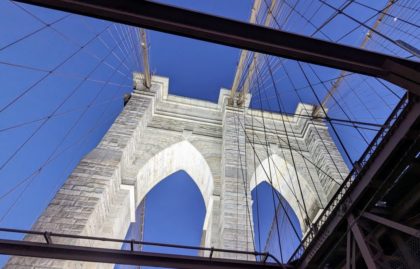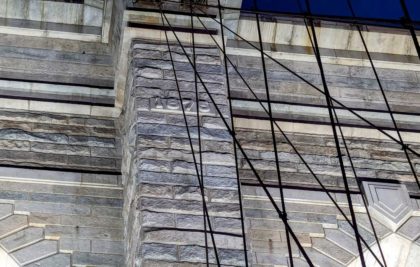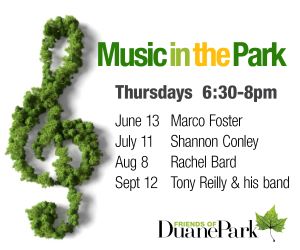The Brooklyn Bridge in lights
The city Department of Transportation recently added LED lighting to the Brooklyn Bridge, and it really is spectacular. If you are not in the habit of walking over at night, make it an outing. These pics are from the bikeway, so the view is a bit limited, but that is no-filter city February sky at about 6p. Wow.
I did not realize that the bridge is a UNESCO World Heritage site, added in 2017 The bridge is on the tentative list of UNESCO World Heritage sites as of 2017, which could explain why the DOT has been sprucing it up. The recent $300-million restoration project featured meticulous cleaning of every individual limestone and granite stone and brick. The goal was to remove damaging grime from the pores of each stone. The mortar used to hold the stones together was also replaced using materials sourced from the same quarry as the original mortar. It turns out the bridge was brown because of generations of pollution; it is now its original gray color.
The lighting project cost $2.4 million and added a total of 56 new lights to the two towers. The last time the bridge’s towers were illuminated was for its centennial celebration in 1983. The 166 necklace lights on its cables were converted to LED bulbs by DOT in 2021.
Construction on the Brooklyn Bridge began in January 1869 and the bridge was the longest suspension bridge in the world when it opened on May 24, 1883. Today, an estimated 120,000 vehicles, 30,000 pedestrians and 4,000 cyclists use the bridge each day. Some other fun facts:
- The bridge cost $15 million to build.
- Total length of the bridge and approaches: 6,016 feet.
- Length of the main span: 1,595.5 feet.
- Clearance at center: 135 feet.
- It was the world’s longest suspension bridge when it opened, and was also briefly the tallest structure in North America.
- The bridge has an unusually long approach extending inland on both the Manhattan and Brooklyn sides because of the city’s low-lying shores.
- The bridge originally had tolls for pedestrians, horse riders, horse and carriage riders, and even farm animals that were originally permitted on the span.
- When the bridge opened, New York City and Brooklyn were two different cities. Brooklyn became part of New York City in 1898.
- John A. Roebling, an immigrant from Germany, was the original architect for the bridge. He died in 1869 during preparation for the bridge’s construction. His son Washington A. Roebling became the bridge’s chief engineer. When Washington A. Roebling fell ill and became bedridden in 1872, his wife Emily Warren Roebling assumed management of the project. Widely credited as the person responsible for the bridge’s successful completion, she famously became the first person to ride across the completed span, holding a rooster, which at the time symbolized victory.
- In 2017, the United Nations Educational, Scientific and Cultural Organization (UNESCO) named the bridge an official World Heritage Site for its architectural and historic significance.


















Growing up, I always thought the bridge was brown. I can’t be the only one who was surprised to see grey once the cleaning began years ago.
It looks downright gorgeous.
The bridge looks absolutely stunning at night in the new lighting. Noticed it from the FDR a few days ago. Job well done.